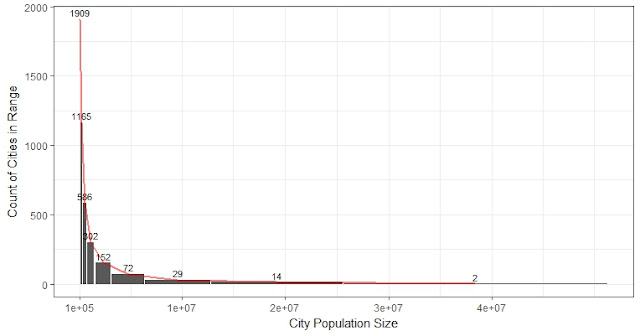RSS Statistic of the year: 69 Americans were killed by lawnmowers annually
In comparison, two were killed annually by Islamic immigrants, and five were killed by terrorists.
About 12 thousand American were killed by another American using guns.
The Royal Statistical Society (RSS) made this the 2017 statistics of the year. I just read it from this issue of Significance magazine, which also includes two arguments criticizing or supporting this award. Both are very interesting.
The original version:
I tend to consider it a good statistic to be in the news as it helps to correct the distorted prevalent impression on the likelihood of such events. Human instinct merely makes a good judgment about probability. The probability of getting killed on a plane is much smaller than getting killed when driving. (P.S. another interesting question, how much smaller? Will discuss in the end)
The comparison to gun shotting is also intriguing and makes people ask why. As Nick Thieme wrote in the for argument on the Significance, it is a descriptive statistic about the past that "provides a good anchor from which to judge the high number of gun deaths with the low number of victims of immigrant Jihadists.".
On the other hand, quite easily the descriptive statistic was explained as an inference for the future in the news and changed the taste. Google it we get titles like "Americans more likely to be killed by lawnmowers than foreign terrorists" ranked on the top. This title seems OK at first sight, but does it convey honestly the same information? For a gardener in the countryside it seems to be the truth, but for a New Yorker working in the financial district during early 2001, it might not be the case. A descriptive statistics is a good reference but is not an inference (prediction) for the future. As the against article by Norman Fenton, a professor at the Queen Mary University of London, pointed out, terrorists attach is a systemic risk that can be prevented by proper actions, while death from lawnmowers are generally random and unpredictable. The distributions of the two kinds of deaths are so different that simplifying them by the means has removed lots of information. The deaths from terrorist attacks is a long-tail distribution that might cause large casualty in a single event, while the death from lawnmower is narrowly distributed and approximately normal. In short, such presentation of data has misrepresented the real risk and oversimplified the issue.
* So how much larger is the risk to get killed in a car accident compared to in an airplane crash?
According to the information I found online, it is only about 100 times larger, which is smaller than I expected. There are many more cars, but planes travel much longer distances. It makes sense to control for the number of passengers and the distance of the trip.
On average there are:
0.01 Deaths per 100 million passenger miles in airplanes.
0.05 Deaths per 100 million passenger miles on buses and trains.
0.72 Deaths per 100 million passenger miles in cars.
About 12 thousand American were killed by another American using guns.
The Royal Statistical Society (RSS) made this the 2017 statistics of the year. I just read it from this issue of Significance magazine, which also includes two arguments criticizing or supporting this award. Both are very interesting.
The original version:
I tend to consider it a good statistic to be in the news as it helps to correct the distorted prevalent impression on the likelihood of such events. Human instinct merely makes a good judgment about probability. The probability of getting killed on a plane is much smaller than getting killed when driving. (P.S. another interesting question, how much smaller? Will discuss in the end)
The comparison to gun shotting is also intriguing and makes people ask why. As Nick Thieme wrote in the for argument on the Significance, it is a descriptive statistic about the past that "provides a good anchor from which to judge the high number of gun deaths with the low number of victims of immigrant Jihadists.".
On the other hand, quite easily the descriptive statistic was explained as an inference for the future in the news and changed the taste. Google it we get titles like "Americans more likely to be killed by lawnmowers than foreign terrorists" ranked on the top. This title seems OK at first sight, but does it convey honestly the same information? For a gardener in the countryside it seems to be the truth, but for a New Yorker working in the financial district during early 2001, it might not be the case. A descriptive statistics is a good reference but is not an inference (prediction) for the future. As the against article by Norman Fenton, a professor at the Queen Mary University of London, pointed out, terrorists attach is a systemic risk that can be prevented by proper actions, while death from lawnmowers are generally random and unpredictable. The distributions of the two kinds of deaths are so different that simplifying them by the means has removed lots of information. The deaths from terrorist attacks is a long-tail distribution that might cause large casualty in a single event, while the death from lawnmower is narrowly distributed and approximately normal. In short, such presentation of data has misrepresented the real risk and oversimplified the issue.
* So how much larger is the risk to get killed in a car accident compared to in an airplane crash?
According to the information I found online, it is only about 100 times larger, which is smaller than I expected. There are many more cars, but planes travel much longer distances. It makes sense to control for the number of passengers and the distance of the trip.
On average there are:
0.01 Deaths per 100 million passenger miles in airplanes.
0.05 Deaths per 100 million passenger miles on buses and trains.
0.72 Deaths per 100 million passenger miles in cars.




Comments